22.03.2024
March 22 – Memorial Day of the victims of the Khatyn tragedy
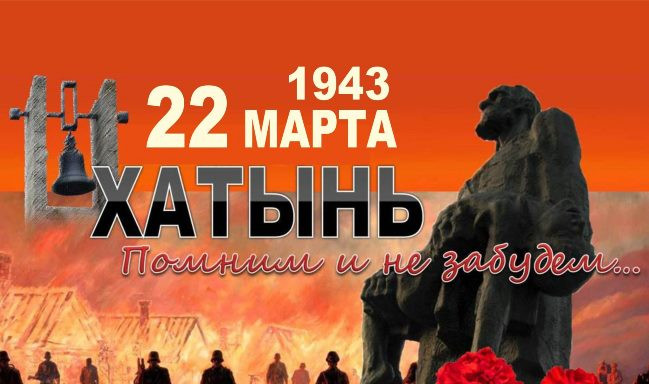
Belarus is paying tribute to the memory of the residents of the village of Khatyn, which was burned by the Nazis 81 years ago, on March 22, 1943. Remembering Khatyn, Belarusians recall thousands of other Belarusian villages destroyed by the Nazi invaders during the Great Patriotic War.
The quiet, friendly Belarusian village of Khatyn is no longer to be found on the map of Belarus. The Nazis burned it down along with 149 residents, 75 of whom were children under the age of 16.
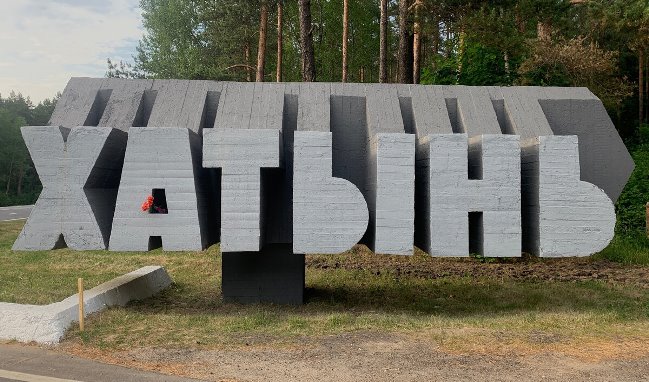
The Nazis sentenced innocent people from the village of Khatyn to death. The fascists drove the elderly, children, women and men out of the houses in the village. The sick and infirm were pushed with butts. They herded everyone into a barn on the outskirts, where hay was once stored.
March 1943 was the last day for 149 Khatyn residents. 26 houses disappeared in the flames. On the site of the forest village there were ashes and lonely chimneys sticking out.


A memorial complex "Khatyn" was created on the site of the village in memory of the dead.
Initially, it was assumed that a memorial to the burned Khatyn would appear at the site of the tragedy. However, the project was revised and Khatyn became a monument to all the villages of Belarus burned during the Great Patriotic War.

Thematically, the Khatyn memorial consists of several parts, but it has a single compositional solution that repeats the layout of the former village. In the center of the complex there is a bronze sculpture "The Unconquered Man", whose height is more than 6 m. It is a symbol of a man who rose alive from the fire, took out the body of a dead boy and carries it through the years, pronouncing an eternal curse to fascism, a curse to any evil on earth. This is a collective image of the Belarusian peasant. His prototype was the witness of the Khatyn tragedy, Joseph Kaminsky, who miraculously survived. He, burned and wounded, got out of the burning barn and found the mutilated body of his son among the corpses of his fellow villagers.
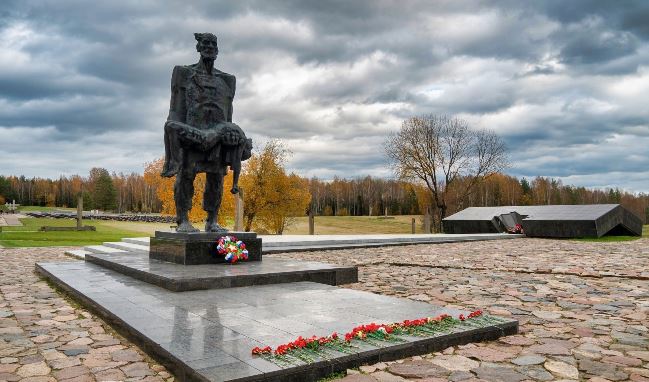
Next to the sculpture are closed granite slabs resembling the roof of a barn in which the punishers burned the inhabitants of Khatyn. On the mass grave there is a marble wreath of memory with a symbolic appeal of the dead to the living with a request to preserve peace and quiet on earth: "Kind people, remember: we loved life and our Homeland, and you, dear ones. We burned alive in the fire. Our request to all: may sorrow and sorrow turn into your courage and strength, so that you can establish peace and quiet on Earth forever. So that from now on, life does not die anywhere and never in a whirlwind of fires!" On the other side of the wreath is the answer of the living to the dead: "You are our relatives. Bowing our heads in great sorrow, we stand before you. You did not submit to the fascist murderers in the dark days of hard times. You have accepted death, but the flame of love for our Soviet Homeland will never go out. The memory of you among the people is immortal, as our Earth is eternal and the eternally bright sun above it."
The tragedy of Khatyn is not an accidental episode of the war, but one of thousands of facts testifying to the purposeful policy of genocide by Nazi Germany towards the population of Belarus. The fate of Khatyn during the Great Patriotic War was shared by thousands of villages of our country. According to recent studies, at least 216 cities and regional centers and more than 9 thousand villages were destroyed and burned by the Nazi invaders in Belarus. Some settlements have not been restored.
We remember!
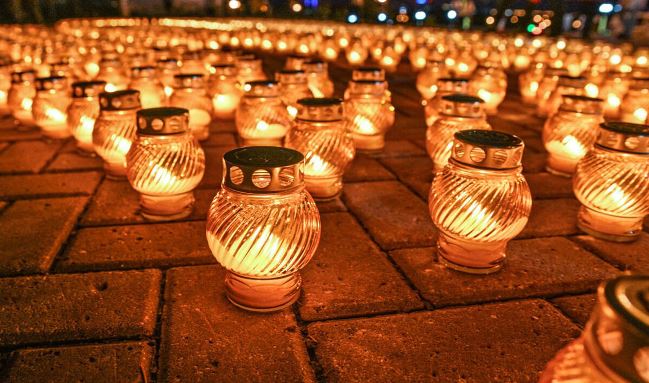
Specialized sites
Informational resources
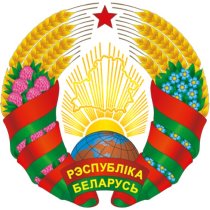 State Symbols of the Republic of Belarus
State Symbols of the Republic of Belarus
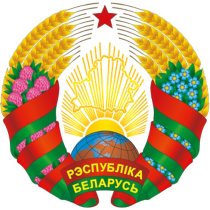 The National Legal Internet Portal of the Republic of Belarus
The National Legal Internet Portal of the Republic of Belarus
 The Ministry of Natural Resources and Environmental Protection of the Republic of Belarus
The Ministry of Natural Resources and Environmental Protection of the Republic of Belarus
 The Official Internet Portal of the President of the Republic of Belarus
The Official Internet Portal of the President of the Republic of Belarus
 The Portal for Rating Assessment of the Quality of Services Provided by Organizations in the Republic of Belarus
The Portal for Rating Assessment of the Quality of Services Provided by Organizations in the Republic of Belarus
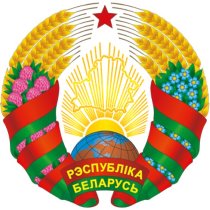 The CIS Interstate Council for Hydrometeorology (CIS ICH)
The CIS Interstate Council for Hydrometeorology (CIS ICH)
 Information Analysis Portal of the Union State
Information Analysis Portal of the Union State
 The Union State Committee on Hydrometeorology and Environmental Contamination Monitoring
The Union State Committee on Hydrometeorology and Environmental Contamination Monitoring
 The Internet Portal "The Youth of Belarus"
The Internet Portal "The Youth of Belarus"







